Savourna Stevenson and Steve Kettley
Acoustic Music Centre (Venue 138)
⭐⭐⭐⭐

On Saturday 27th August, the Traquair Community Choir is performing a concert at the Eastgate Theatre in Peebles, writes Gerald Barlow.
This concert is a big event in the musical life of our part of Peeblesshire. First, it marks the launch of the new Creative Peebles Festival (the successor to the former Peebles Arts Festival).
Secondly, it will feature a programme of music by Savourna Stevenson, the renowned Scottish harpist and composer, joined by her son Miles Norris on the guitar.
Thirdly, it marks a milestone in the development of the Traquair Community Choir, making its first appearance in a major concert on a public stage.
Savourna Stevenson is described as a Scottish ‘national treasure’ (The Herald), known nationally and internationally for her playing of the clarsach and pedal harp, who has been at the forefront of the harp revival for many years.
She is also a renowned composer of music for theatre, dance and concerts, and has received commissions from many orchestras and choirs, most recently from Cappella Nova.
Savourna began playing the piano and composing from the age of 5 with her father, the late Scottish composer Ronald Stevenson.
Although her music strongly reflects her Scottish roots, it also reflects her urge to break through stylistic barriers between folk, world music and jazz. A performance of Savourna’s new work ‘The Dream’ can be heard during a programme at St Giles on 21st August by the Scottish Vocal Ensemble, in which coincidently the musical director of our Traquair Choir, Julie Leavett, sings soprano. Links within links!
The Eastgate concert will begin with The Traquair Choir performing a short programme of contemporary and traditional folk songs, including two of Savourna’s compositions commissioned by the National Youth Choirs of Scotland – ‘The Finn Woman’ and ‘Waiting for the Silver Sailed Moon’.
The latter was described by critics as “the loveliest tune to have been created by the choral organisation’s commissioning work”.These will be accompanied by Savourna on the pedal harp.
For the ‘Headline’ event of the evening, Savourna Stevenson (clarsach) and Miles Norris (guitar) will perform music from around the world, from African-inspired to South American flavoured, an Irish waltz and music from mediaeval England and beyond.
The Traquair Choir has in the two years since its beginning in 2014, grown rapidly in numbers from an initial 20 to 50. It is still very much a community choir open to singers of all abilities and all ages: the youngest is 12 and the oldest 84. Its success is due to the exceptional skills of its musical director Julie Leavett, in making even those who have never sung or read music before to feel welcomed, enabled to find real enjoyment and their skills growing.
The choir performs a mixed repertoire, rehearsing and performing a range of genres each term.
Appreciation is due to Elaine Heron, the founder of the Traquair Choir and moving spirit behind this new and exciting collaborative concert at the Eastgate.
One of Scotland’s leading and most innovative musicians and composers is set to play a special concert in Stonehaven.
Savourna Stevenson, a world-class player and champion of Scotland’s traditional harp, the clarsach – will perform on February 27, giving audiences a rare chance to hear her unique take on this beautiful and ancient instrument.
She will playing after holding workshops for local harp players, with both the tuition and the concert staged by the North-east branch of The Clarsach Society.
Savourna has had a lifelong love of the clarsach and has written prolifically for the instrument, collaborating with traditional artists including Aly Bain, Eddi Reader, Danny Thompson and June Tabor.
Savourna began playing the piano and composing at the age of five with her father, the composer Ronald Stevenson. Her current commissions include her largest project to date, a work for piano and orchestra named The Secret Life Of A Piano.
Her Stonehaven concert, which begins at 7.30pm, will see her perform with her son, Miles Norris, on guitar. It will be held in The Church of St James with tickets available on the door. Proceeds are going to the fabric fund of the church. Pamela McFadden, secretary of the branch, said: “Savourna is recognised as a major talent and we are honoured to have her both teach in Stonehaven, then play for a wider audience.”
For more details, contact Pamela McFadden ad [email protected].
Read more: http://www.kincardineshireobserver.co.uk/news/local-headlines/savourna-to-play-stonehaven-this-weekend-1-4037446#ixzz44lFJdzfb
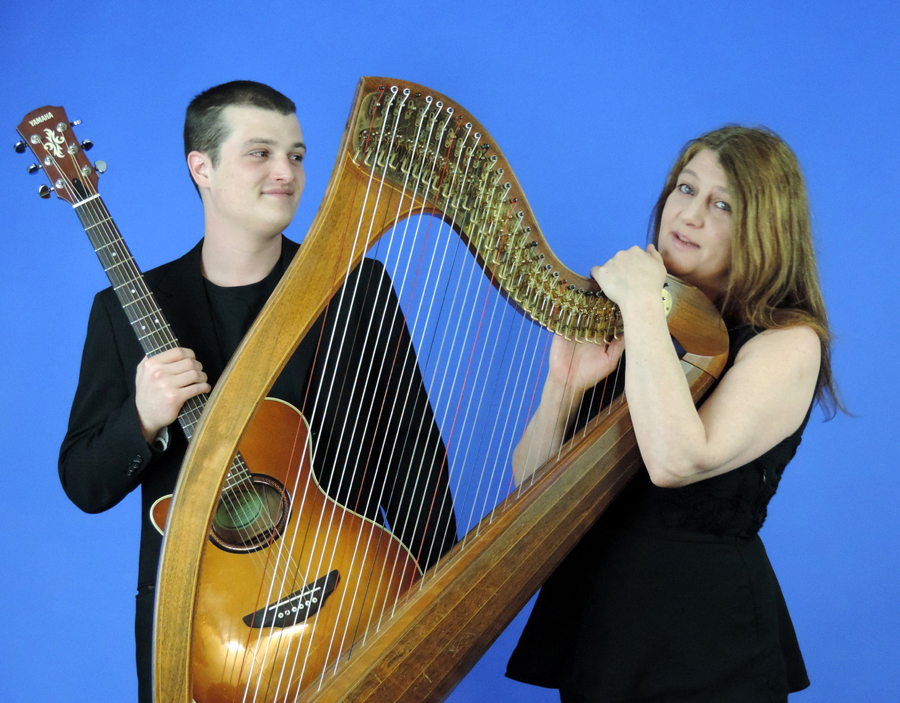
A pioneering concert in Broughton Village Hall will showcase the talents of one of Peeblesshire’s most famous musicians – and it’s all for a good cause.
The concert on Saturday, May 17, features the combined talents of harp and clarsach virtuoso Savourna Stevenson and her son Miles Norris, who plays guitar and bass guitar.
The evening’s entertainment has been devised by Broughton mother Ingrid Campbell, whose son Dart is in Primary 1 at the local school.
Her hope is that this popular concert will help kick-start a range of other musical events and activities both in school and further afield.
“I would like to do something to help encourage a love of music in our local young children,” she said. “I hope that this concert will make some money which we can plough back into further music-making in the community.”
Savourna Stevenson has had a varied and brilliant career and is established as one of the most imaginative musicians in the Borders.
Her cross-cultural enthusiasm has led to collaboration with artists from the worlds of traditional, jazz, rock and world music, working with an impressive array of musicians including Aly Bain, Danny Thompson, the Bhundu Boys, the Royal Scottish National Orchestra, the 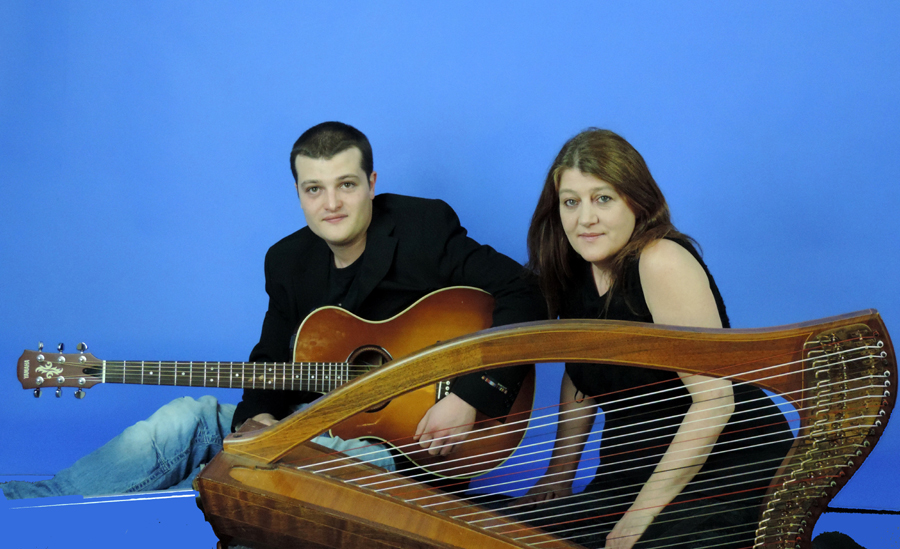 National Youth Choirs of Scotland, the Scottish Ensemble and Catrin Finch, former Royak Harpist to HRH the Prince of Wales.
National Youth Choirs of Scotland, the Scottish Ensemble and Catrin Finch, former Royak Harpist to HRH the Prince of Wales.
Savourna has become famous as a pioneer composer for the clarsach, or Scottish harp, performing on groundbreaking instruments made by her husband Mark Norris in his Stobo workshop.
Her son is a talented guitarist and bassist. He spent two years in Germany working on music projects for people with special needsand also playing bass in the German reggae band Antofagasta.
Broughton Village Hall will be set up with a fully licensed bar and cafe tables for a varied programme ranging from early music, through traditional Scottish and Irish, bluegrass, jazz, Latin, and blues from the harp and guitar, including excerpts from Savourna’s celebrated ‘Tweed Journey’, commissioned in 1989 for the Borders Festival of Ballads & Legends…
IN A telling aside during this Edinburgh International Harp Festival concert, having referred to her set-list’s spanning of numerous different genres, harpist/composer Savourna Stevenson wrinkled her nose and observed, “I don’t really like that word.”
****
Billed as a mini-retrospective of her recording and composing career, right back to her 1985 debut album Tickled Pink, the programme certainly highlighted Stevenson’s fruitful lack of regard for genre divisions, especially now she’s working equally on the traditional clarsach and the classical pedal harp – a boundary-free approach, with a breadth and depth of technique to match, that underpins her status at the forefront of Scotland’s harp revival.
Traditional music remains a central wellspring of inspiration for her compositions, even if her innovative array of fingering methods and unorthodox keys or scales often transported these sources far beyond their roots – as in the eldritch atmosphere and dramatic colours of The Source, from her Tweed Journey suite, conjuring the tale of Thomas the Rhymer, and the vivid impressionism of Dawn, Earth, Wind and Water.
A clarsach-led first half, whose last couple of numbers featured Stevenson’s guitarist son [ Miles Norris ] , also wove in jazz and Latin influences.
Meanwhile, after the interval, the pedal harp took centre stage, primarily in her three-movement Harp Quintet, for which she was joined by the Edinburgh Quartet, in a beautifully intricate, bold yet delicate interlacing of different string timbres and textures, exploring and enriching the piece’s four core folk-song melodies.
While the fact that the Scottish Ensemble and Catrin Finch were premiering Savourna Stevenson’s new harp concerto on the same weekend that the composer herself was out on the road was simply serendipitous, this programme itself was a joy of joined-up thinking. Stevenson has been one of the most-sung contributors to the National Youth Choirs of Scotland commissioning programme and the model of involving one of the area NYCoS choirs on the platform to accompany those songs could be replicated by local promoters across the country…The whole recital was beautifully coherent and an original journey reaching far beyond the Border river of the composer’s youth.
Stevenson is aiming to cover the whole harp gamut in one show
The influence of clarsach and harp player Savourna Stevenson – celebrating her 50th birthday with a Celtic Connections concert tonight– shows no sign of waning, discovers Sue Wilson
TAKING a break from rehearsals for her 50th birthday concert at Celtic Connections, harpist and composer Savourna Stevenson is the very embodiment of a woman happy in her work.
“If I could, I would just play the harp all day, every day, every waking hour – and possibly in my sleep, too,” she says. “Obviously I can’t: as it is, I often play to the point of, ‘Oh dear, I can’t straighten my fingers,’ or noticing I’ve got all these broken blood vessels in my wrists – but I just love it.”
Although she’s primarily known as the leading contemporary renaissance pioneer on Scotland’s oldest national instrument, the clarsach, the most immediate reason why Stevenson’s cup overfloweth is her rekindled love affair with the much bigger classical pedal harp. “I played it as a teenager, but for a long time after that, until maybe three or four years ago, pretty much all my work was on the clarsach – which pedal harpists tended to look down on in those days, though that’s all completely changed now. But as a composer, the pedal harp is like having a grand piano to work with: it’s just got so many more notes, and also pedal harpists are much keener for new material – the clarsach players all want to do their own thing.”
Stevenson has only herself to blame for this creative independence of spirit among her Scottish co-instrumentalists. Name any leading younger exponent – of whom there are plenty, such as Corrina Hewat, Catriona McKay, Fiona Rutherford and Ailie Robertson, all headlining elsewhere at Celtic Connections – and the chances are she’s taught them, or they’ll certainly cite her as a key inspiration.
“I first heard Savourna’s music on a cheap compilation called The Celtic Harp or some such, when I was about 14, and I just played it to death,” says Rutherford, whose New Voices commission premières at the festival on Sunday. “I just loved the way she has no genre boundaries, all the really inventive ways she uses the harp, and the way she combines it with other instruments. As a teacher, too, she was so inspiring and encouraging, particularly with my interest in composing as well; she really treats every student as a total individual, and will work with whatever style you want to pursue.”
“Savourna just keeps on raising the bar,” says Hewat, principal harp tutor at the Royal Conservatoire of Scotland, who performed in her own six-harp suite, The Oak and the Ivy, at in Glasgow last week, and who’d been playing for just six weeks when first taken under Stevenson’s wing at a fèis in Fort Augustus. “She’s incorporated influences from all over the world, she uses all the colours, textures and rhythms possible – and as long as she keeps doing that, everyone else in Scotland has to follow. She’s a total inspiration.” Both players, needless to say, will be at tonight’s gig – in fact, if you want to know the whereabouts of pretty much any Scottish harp player that night, established or aspiring, it’s a fair bet they’ll be in the City Halls.
The outset of Stevenson’s own musical journey involved a similarly full immersion in her milieu as she continues to practise. As the daughter of the great Scottish pianist and composer Ronald Stevenson, she too started out learning the piano, and was writing her own tunes from the age of five. “But I was also hearing just about every other kind of music around the house, with lots of different musicians visiting – everything from Gaelic psalm singing and mouth-music to modern jazz, stuff from all round the world. In fact, I used to have a game with my Dad called Journey Around the World, where we’d play duets in different modes from different countries. You just ate, slept and drank music in our house – there was no escape. I actually took up the harp to get away from my Dad – just in the sense that the piano was his instrument – but then he immediately started writing lots of music for the clarsach.”
Her subsequent landmark albums, such as Tweed Journey and Calman the Dove, saw Stevenson charting new territories in exploring her instrument’s capabilities, demolishing its douce, drawing room image in bold creative encounters between folk, jazz and world music. During the past decade, though, she’s been back working mainly in the classical realm – albeit one that’s progressed considerably in its attitude to other genres since she was young – composing for and performing with orchestras, chamber groups and choirs. Hence her return, too, to the pedal harp – which, she mentions as an aside, celebrated the bicentenary of its invention last year, Sebastian Erard’s revolutionary double-action mechanism having first opened up the instrument to chromaticism back in 1811.
“But even though I might be seen now as a contemporary classical composer, I don’t compose squeaky-gate music: I am always going to write accessibly,” she says firmly. “I get fed up with new music that doesn’t lift your spirits in some way. And the one emotion I never want to elicit in an audience is boredom.”
The birthday show’s centrepiece is a semi-première performance, with the Edinburgh Quartet, of Stevenson’s Harp Quintet – originally staged at Celtic Connections 2000, and now newly transcribed from the clarsach to the pedal harp, in the interim having been excerpted for the soundtracks of both Sex and the City and Ugly Betty. (“I’d never heard of either,” she confides, “but I did at last manage to impress my daughter.”)
The rest of the programme reunites her with that man she calls “probably my favourite collaborator of all”, double bass legend Danny Thompson, for a selection of favourite pieces ranging from Debussy and Granados, to originals variously inspired by Gershwin, Harpo Marx and kora maestro Toumani Diabaté. “Basically I want to cover the whole harp gamut in one show,” Stevenson says. If anyone can do it, she can.
THE SCOTSMAN • JIM GILCHRIST • THE ARCHES, GLASGOW ****
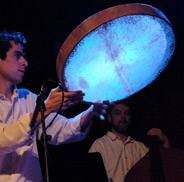 SAVOURNA Stevenson has developed an utterly distinctive and inventive harp sound, its Scottish roots infused with eclectic elements, resulting in lithe, jazz inflections or richly toned, impressionistic languor.
SAVOURNA Stevenson has developed an utterly distinctive and inventive harp sound, its Scottish roots infused with eclectic elements, resulting in lithe, jazz inflections or richly toned, impressionistic languor.
She was clearly delighted to be teaming up with two of the superb Marseilles-based Iranian percussionist family, the Chemiranis, and the results were frequently exhilarating. A lengthy percussion duet demonstrated the Chemiranis’ razor-sharp interaction and the multi-voiced chatter of their drums, before the ensemble, joined by double-bassist Brian Shiels and Gaelic singer Alyth McCormack, presented Persian Knight and Celtic Dawn, Stevenson’s settings of the words of the Lebanese poet and philosopher Kahlil Gibran (some of it translated into Gaelic by Aonghas MacNeacail).
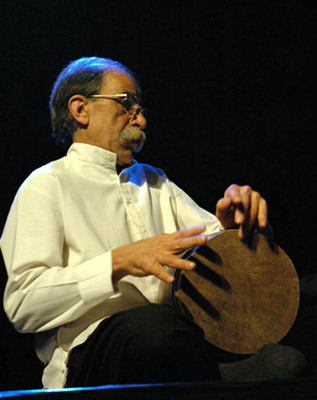 These made for eloquent lyrics, sensitively set and beautifully sung by McCormack (with the ensemble joined briefly by a second harpist, June Naylor).
These made for eloquent lyrics, sensitively set and beautifully sung by McCormack (with the ensemble joined briefly by a second harpist, June Naylor).
Other effective instrumental pieces included the raga-like Emily’s Calling, with a single drum whirring alongside the harp, and Stevenson’s stealthy chiming over thrumming drums and bass in Time.
This was frequently beguiling music, delicate and intricate as fretwork but, between the rumble of passing trains and the intrusively noisy crowd allowed into the adjoining space, the Arches wasn’t the best place to appreciate it. Was that a dramatic flourish of Iranian drumming, or just the 8:15 for Wemyss Bay?
When Savourna Stevenson forsook classical piano studies for the Scottish harp in a fit of teenage rebellion, even she couldn’t have imagined that the instrument, almost forgotten at the time, would be the key to such varied musical adventures.
Whatever music she’s since heard in her head – be it jazz, blues, bluegrass banjo, African kora or Mexican mariachi band – Stevenson has translated it onto the harp without hint of novelty value or gimmickry. The result has been a body of work as individually expressive as it is unpredictably eclectic and that retains her Scottish roots while considering the next horizon.
Although not always the most visible of performers, she invariably breaks out of her Borders retreat with renewed passion and her latest work, settings of Lebanese poet Kahlil Gibran’s texts for harp and Iranian percussion ensemble The Chemiranis, promises another eventful chapter in her continuing travelogue.
review by SUSAN MANSFIELD – The Scotsman
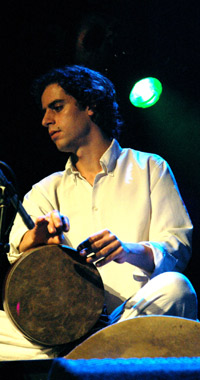 SAVOURNA Stevenson boldly takes the clarsach where no clarsach has gone before. In her hands, the Celtic harp has voyaged into the territory of bluegrass banjos, sitar-style cascades, Indian ragas and African beats.
SAVOURNA Stevenson boldly takes the clarsach where no clarsach has gone before. In her hands, the Celtic harp has voyaged into the territory of bluegrass banjos, sitar-style cascades, Indian ragas and African beats.
A concert at Celtic Connections will preview tracks from her forthcoming album, her ninth, which has a distinctly Middle Eastern flavour. But this is only one aspect of her work.
“Scotland’s most adventurously accomplished clarsach player”, as she has been called, has many other strings to her harp, from writing orchestral work, to having her music featured on Sex and the City.
Persian Knight Celtic Dawn – a typical Stevenson title, with a quirky twist of humour – features the playing of Iranian percussionists, the Chemiranis, and in particular the zarb, a drum played with the fingers which can produce as many different notes as a piano and is described by Stevenson as “mesmerising”.
Two of the Chemiranis will join Stevenson for her Celtic Connections gig at the Arches on Saturday.
They first met and played together at the Real World Festival. “I was doing an all-night live broadcast for Radio 3, and all the artists were listening to each other as we waited for our turn to play, appreciating each other’s music. Argentine accordionist Raoul Barbosa was there, the Chemiranis and myself, and we all just started playing together. It was a lovely impromptu playing experience.”
She promised the Chemiranis that when the right opportunity arose, they would collaborate. When Stevenson began to write songs for her new album, using text from ‘The Prophet’, by Lebanese writer Kahlil Gibran, she realised the time had come.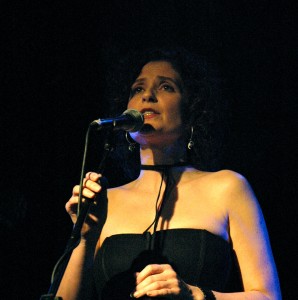
“The album will be very much a meeting of cultures from East and West,” she says. “The intricacy and ornament of Persian music is a little like Celtic music. I want the Chemiranis to bring some of their culture to it.”
She was reminded of the musical potential of ‘The Prophet’ in 2002 when she was asked to play at Peter Gabriel’s wedding “on a beach in Sardinia”, at which Gibran’s passage on marriage was one of the readings. She has now set that, along with two other passages, to music. Gibran’s ‘Joy and Sorrow’ has been translated into Gaelic by her brother-in-law, the poet Aonghas MacNeacail, and will be sung by Alyth McCormack.
“I love to hear the human voice on my records. Just as music is an international language, the words of Gibran speak to anybody and everybody. It’s full of wonderful messages and symbols, a book you keep on the shelf and dip into. And it’s so international, we all feel the same about marriage, children, friendship.”
Stevenson is also increasingly being recognised as a classical composer. In 2001, she received a Creative Scotland Award – “a life-changing experience” – to write an orchestral work for young people. The resulting symphonic piece, ‘Misterstourworm and the Kelpie’s Gift’ was performed to great acclaim in 2003, with the actor Billy Boyd as the narrator.
“It was so successful that Children’s Classic Concerts decided to commission another one, which was an absolute joy,” she says. Hansel and Gretel was performed this season by the Scottish Opera Orchestra to capacity crowds at the Glasgow Royal Concert Hall, and Usher Hall in Edinburgh, narrated by Taggart actress Blyth Duff, wearing “a fantastic pair of witchy shoes.”
It’s a challenge for Stevenson to switch between different types of music, one day composing for herself at the clarsach, the next sitting at a desk with a full orchestral score. “It’s a very different world to break into, but I think it’s a really healthy thing to be involved in so many different kinds of music”.
“I’ve had such a warm rea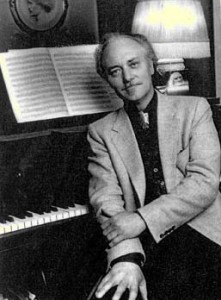 ction to my music from the orchestral players, maybe there’s something new for them in the fact that I started out in traditional music, with the likes of Fairport Convention and Aly Bain, and have been involved in world music and jazz. Hansel and Gretel also has a strong East-European element.”
ction to my music from the orchestral players, maybe there’s something new for them in the fact that I started out in traditional music, with the likes of Fairport Convention and Aly Bain, and have been involved in world music and jazz. Hansel and Gretel also has a strong East-European element.”
She is following in the footsteps of her father, the composer Ronald Stevenson, who peppered her early piano lessons with eclectic musical influences. “I’m very lucky to have been exposed to so many different types of music from very early on. My father was passionate about Lewis Psalm-singing, pibroch and jazz, as much as classical music, and he would talk to me about these things when he was teaching me the piano.”
However, of all the places her music has ventured, perhaps the most unexpected is on to the set of Sex and the City, where a recording of her string quintet was used for scenes such as Charlotte’s wedding.
“My record company phoned me up completely out of the blue and said, ‘Somebody wants to use your music for Sex and the City’. I was a bit shocked, but it certainly gave me a bit more street cred with my teenage son and his mates.”